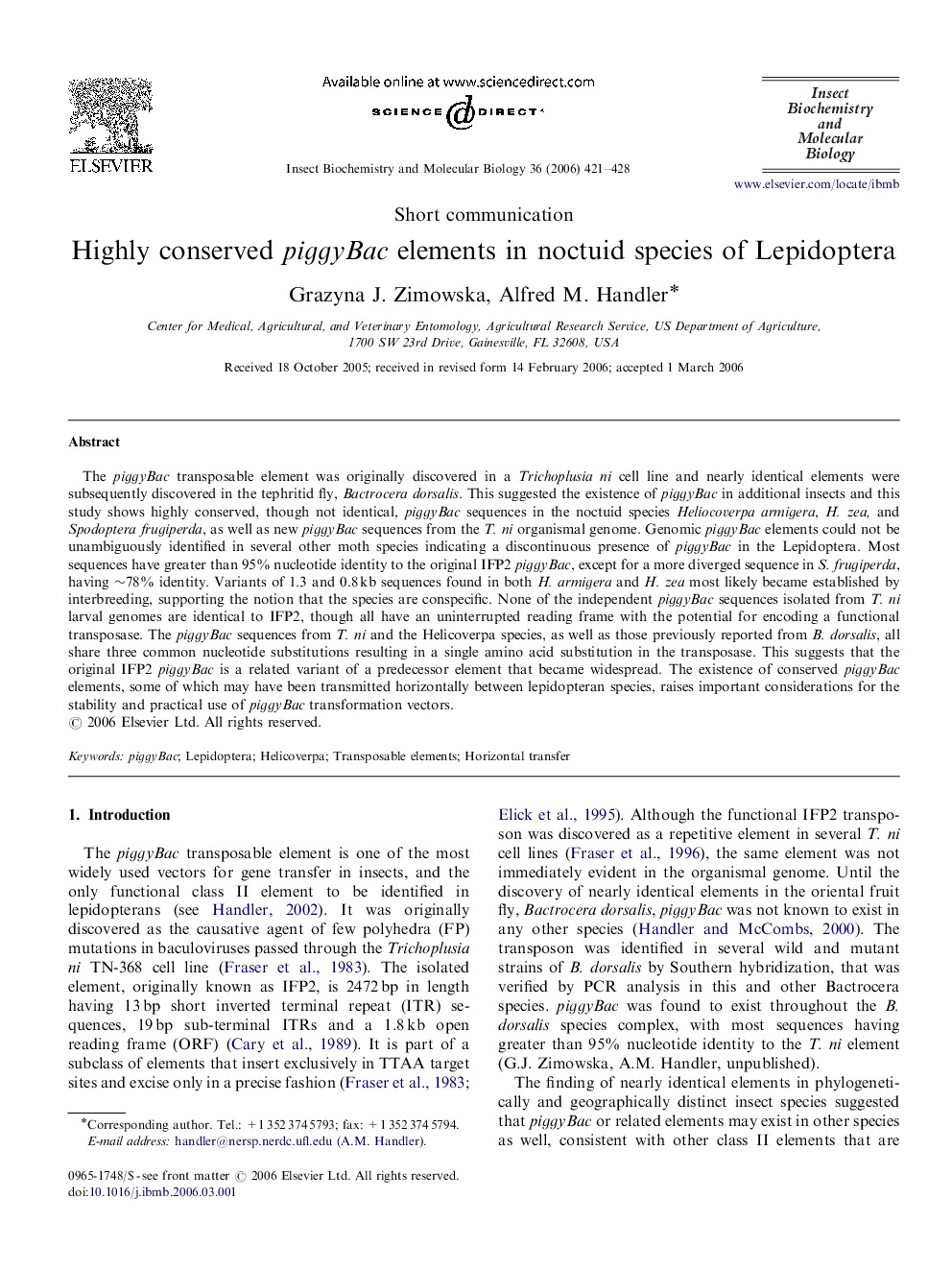| کد مقاله | کد نشریه | سال انتشار | مقاله انگلیسی | نسخه تمام متن |
|---|---|---|---|---|
| 1983081 | 1062340 | 2006 | 8 صفحه PDF | دانلود رایگان |

The piggyBac transposable element was originally discovered in a Trichoplusia ni cell line and nearly identical elements were subsequently discovered in the tephritid fly, Bactrocera dorsalis. This suggested the existence of piggyBac in additional insects and this study shows highly conserved, though not identical, piggyBac sequences in the noctuid species Heliocoverpa armigera, H. zea, and Spodoptera frugiperda, as well as new piggyBac sequences from the T. ni organismal genome. Genomic piggyBac elements could not be unambiguously identified in several other moth species indicating a discontinuous presence of piggyBac in the Lepidoptera. Most sequences have greater than 95% nucleotide identity to the original IFP2 piggyBac, except for a more diverged sequence in S. frugiperda, having ∼78% identity. Variants of 1.3 and 0.8 kb sequences found in both H. armigera and H. zea most likely became established by interbreeding, supporting the notion that the species are conspecific. None of the independent piggyBac sequences isolated from T. ni larval genomes are identical to IFP2, though all have an uninterrupted reading frame with the potential for encoding a functional transposase. The piggyBac sequences from T. ni and the Helicoverpa species, as well as those previously reported from B. dorsalis, all share three common nucleotide substitutions resulting in a single amino acid substitution in the transposase. This suggests that the original IFP2 piggyBac is a related variant of a predecessor element that became widespread. The existence of conserved piggyBac elements, some of which may have been transmitted horizontally between lepidopteran species, raises important considerations for the stability and practical use of piggyBac transformation vectors.
Journal: Insect Biochemistry and Molecular Biology - Volume 36, Issue 5, May 2006, Pages 421–428